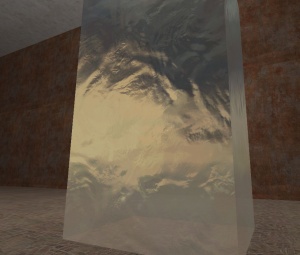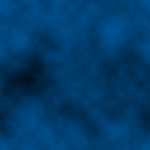Making a wall of water
January 2024
Sometimes, a wall of water is a nice (or required) feature of a map. However, the Water shader can not do that; it is limited to flat, horizontal surfaces. The LightmappedGeneric shader can be used to mimic most of the Water shader's features instead.
You can simulate reflections with cubemaps and fog, with the material's "bottom". However, refractions are not possible. Like the Water shader you have to use two VMT files. The normal $bumpmap will be used.
VMT Top
For $basetexture, an image created in Photoshop with a cloud filter should make an alpha channel using the desired transparency. You can then export to a Source VTF file with the right tools.
LightmappedGeneric
{
%compilewater 1
$abovewater 1
$surfaceprop water
$bottommaterial ...
$basetexture dev/water_moving // base texture that you made earlier
$bumpmap dev/water_normal // bump map
$translucent 1
$envmap env_cubemap
$envmaptint "[1 .9 .8]"
$envmapcontrast 1
$fogenable 1
$fogcolor "[1 1 1]"
$fogstart 0
$fogend 50
Proxies
{
AnimatedTexture
{
animatedtexturevar $basetexture
animatedtextureframenumvar $frame
animatedtextureframerate 21
}
AnimatedTexture
{
animatedtexturevar $bumpmap
animatedtextureframenumvar $bumpframe
animatedtextureframerate 21
}
}
}
You will notice that the still-image $basetexture is set to be animated in the VMT. This is necessary to get $bumpmap animated too.
VMT Bottom
LightmappedGeneric
{
$basetexture ...
$translucent 1
$fogenable 1
$fogcolor "[1 1 1]"
$fogstart 0
$fogend 300
}

